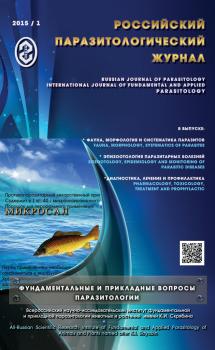Objective of research. The purpose of the study is to test the effectiveness of anthelmintic helminthiasis of the digestive tract of cattle and to offer practices for the most effective of them. Materials and methods. Tests of anthelmintic held in LLP “Diet” West Kazakhstan region 40 animals, spontaneously infested strangulate of the digestive tract. Cattle were divided into 4 groups of 10 animals each. Animals of the first group was administered ivermec 1% solution intramuscularly in a dose of 0.2 mg/kg at ET rate of 0.02 ml/kg Animals of the second group asked alot oral-suspension in a dose of 7.5 mg/kg on ET rate of 0.75 ml/kg of Levamisole was administered subcutaneously to animals of the 3rd group at a dose of 7.5 mg/kg at a rate of 0.1 ml/kg. Animals of the fourth group was used and served as control. The effectiveness of the drugs considered through 18 days after deworming according to the results Koprivshtitsa studies by flotation using counting chambers WIKIS and efficiency calculation type “control test”. Results and discussion. In the first group the efficacy was 100%. In the second group, EE – 90%, IE-98,9%. In the third group EE-80%, IE-98,5%. In the fourth group the invasion of animals has not significantly changed and amounted to 108,1 beginning of the experiment and after 18 days of 110.4 of strongest. Thus, ivermec is most effective during the helminthiasis of the digestive tract of cattle.
cattle, efficiency, anthelmintic, ivermec.
Введение
Гельминтозы наносят большой ущерб животноводству, который выражается в снижении продуктивности, прироста массы тела, задержке в развитии и росте молодняка, недополучении жизнеспособного приплода, гибели животных, в значительных затратах на проведении лечебно-профилактических мероприятий, потере племенных качеств скота и пр. [2].
Стронгилятозы пищеварительного тракта являются наиболее часто встречающимися гельминтозами у крупного рогатого скота [6].
В последние годы в Западно-Казахстанской области увеличилась инвазированность крупного рогатого скота гельминтами пищеварительного тракта, что обусловлено сменой формы собственности и финансовым состоянием фермерских хозяйств, большинство из которых не способны приобретать антигельминтики и регулярно проводить дегельминтизацию животных [3].
1. Arkhipov I.A. Anthelmintic: pharmacology and application. - M., 2009. - 406 p.
2. Demidov N.V. Fascioliasis in farm animals: Dis. ... Dr. vet. Sciences. - M., 1963. - 630 p.
3. Kasmaliev R.S. Helminth infections of the digestive tract of farm animals in the region and the effectiveness of remedies, Proc. Vseros. Institute of gelemental. - 2004. - T. 40. - S. 105-111.
4. Migacheva L.D., Kotelnikov G. A. Koprivshtitsa diagnosis of strongylatosis sheep, Proc. Vses. Institute of gelemental. - 1989. - Vol. 30. - S. 87-92.
5. Polyakov, P.A. in Vivo differential diagnosis of strongylatosis ruminant digestive tract by parasitic larvae: dis. ... candidate. vet. Sciences. - M., 1953. - 23 p.
6. Potemkin V.A. Monieziasis in ruminants. - M.: Kolos, 1965. - 243 S.
7. Yatusevich A.I., etc Helminthocenosis of ruminants and their prevention // Intern. journal of veterinary medicine. - 2005. - No. 2. - S. 31-33.





